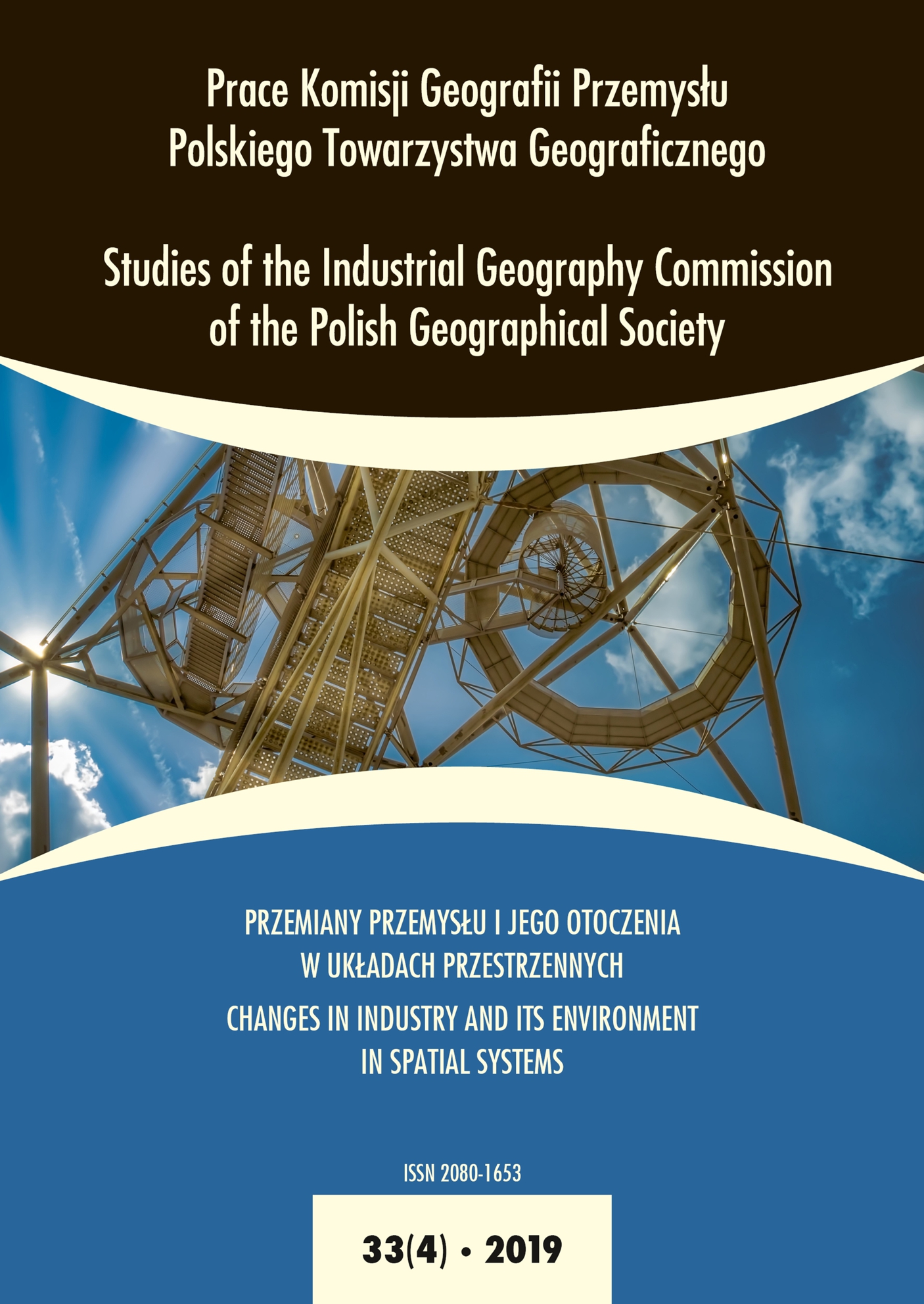Industry and Technologies in the Context of Implementing Smart City Concept
DOI:
https://doi.org/10.24917/20801653.334.12Keywords:
city, city concepts, development, industry, smart city, urban studiesAbstract
From among the many concepts and visions of cities, the concept of a smart city is becoming more and more popular. Smart city is a city that uses information and communication technologies to increase the interactivity and efficiency of urban infrastructure, as well as to improve the quality of life of residents.
Currently, the city can be treated as “smart” when it invests in human and social capital and communication infrastructure to actively promote sustainable economic development and high quality of life, including smart management of natural resources, through civic participation. A smart city is a coherent system, which operates based on ICT information and telecommunication technologies, collective communication control systems, monitoring, automation, autonomous devices and computer programs. The article presents and systematises technological solutions that are starting to appear in cities around the world, areas in which smart city technologies can be applied and a review of the market development and technology of smart cities and major producers of technological solutions for this type of cities will be made.
Downloads
Metrics
References
Andrews, C.J. (2001). Analyzing quality-of-place. Environment and Planning B: Planning and Design, 23, 201–217.
Appleyard, D. (1981). Livable Streets. Berkeley: University of California Press.
Azkuna, I. (red.) (2012). Smart Cities Study: International study on the situation of ICT, innovation and Knowledge in cities. Bilbao: The Committee of Digital and Knowledge-based Cities of UCLG.
Citaslow (2018) (2019, 7 lutego). Pozyskano z https://cittaslowpolska.pl/index.php/pl/
Citaslow Polska (2018) (2019, 7 lutego). Pozyskano z https://cittaslowpolska.pl/index.php/pl/o-cittaslow
Cohen, B. (2019, 7 lutego). The 3 Generations Of Smart Cities. Fast Company. Pozyskano z https://www.fastcompany.com/3047795/the-3-generations-of-smart-cities
Compass Intelligence (2018) (2019, 7 lutego). Top 15 in The CompassIntel A-List in Smart Cities Index. Pozyskano z https://www.compassintelligence.com/a-list-index-in-smart-cities.html
Drobniak, A., Plac, K. (2015). Urban resilience – transformacja miast poprzemysłowych aglomeracji górnośląskiej. Studia Ekonomiczne. Zeszyty Naukowe Uniwersytetu Ekonomicznego w Katowicach, 250, 75– 97.
Easypark (2018) (2019, 7 lutego). Smart cities rank 2017 by Easypark group. Pozyskano z https://easyparkgroup.com/smart-cities-index/Frost & Sullivan (2019, 7 lutego). Smart Cities. Pozyskano z https://ww2.frost.com/wp-content/uploads/2019/01/SmartCities.pdf
Kaal, H. (2011). A Conceptual History of Livability. City: Analysis of Urban Trends, Culture, Theory, Policy, Action, 15(5), 532–547.
Ley, D. (1990). Urban Liveability in Context. Urban Geography, 11(1), 31–35.
McKinsley Global Institute Analisys (2018). Smart cities: digital solutions for a more livable future. E-book versions of selected MGI reports are available at MGI’s website.
MIiR (2015) (2019, 7 lutego). Krajowa polityka miejska 2023. Warszawa: Ministerstwo Infrastruktury i Rozwoju. Pozyskano z https://www.miir.gov.pl/media/11579/Krajowa_Polityka_Miejska_2023.pdf
Myers, D. (1988). Building knowledge about quality of life for urban planning. Journal of the American Planning Association, 54, 347–358.
Nijkamp, P. (2008). XXQ Factors for sustainable urban development: A systems economics view Romanian Journal of – Regional Science. The Journal of the Romanian Regional Science Association, 2(1).
OECD (2018) (2019, 7 lutego). Pozyskano z http://www.oecd.org/cfe/regional-policy/resilient-cities.htm
Ogrodnik, K. (2015). Idea miasta zwartego – definicja, główne założenia, aktualne praktyki. Architecturae et Artibus, 7(4), 35–42.
Philips (2018) (2019, 7 lutego). Raport Smart Cities w Polsce. Wyzwania i korzyści. Pozyskano z http://www.lighting.philips.pl/systemy/tematy/raport-cyfrowe-miasta
Register, R. (2002). Ecocities: Building Cities in Balance with Nature. Berkeley, Calif: Berkeley Hills Books.
Rojek, M. (2016) (2019, 7 lutego). Czym jest cyfryzacja? Pozyskano z https://ceo.com.pl/marcin-rojek-czym-jest-cyfryzacja-79635
Roseland, M. (1997). Dimensions of the eco-city. Cities, 14(4), 197–200.
Schumacher, E.F. (2013). Małe jest piękne. Ekonomia z założeniem, że człowiek się liczy. Warszawa: Aletheia.
Smart cities. Ranking of European medium-sized cities (2007) (2019, 7 lutego). Pozyskano z www.smart-cities.eu/download/smart_cities_final_report.pdf
Strategia na rzecz odpowiedzialnego rozwoju (2017). Ministerstwo Rozwoju, Departament Strategii Rozwoju. Pozyskano z https://www.gov.pl/documents/33377/436740/SOR.pdf
Strategia rozwoju kraju (2012). Warszawa: Ministerstwo Rozwoju Regionalnego.
Stryjakiewicz, T. (2010). Przemiany w geografii przemysłu. Prace Komisji Geografii Przemysłu Polskiego Towarzystwa Geograficznego, 15, 30–44.
Urbancity (2018) (2019, 7 lutego). Pozyskano z http://urbanicity.org/urbanicityalerts/latest-events.htm
Downloads
Published
How to Cite
Issue
Section
License
Articles are published under the terms of the Creative Commons License (CC BY-ND 4.0; Attribution– NoDerivs).

